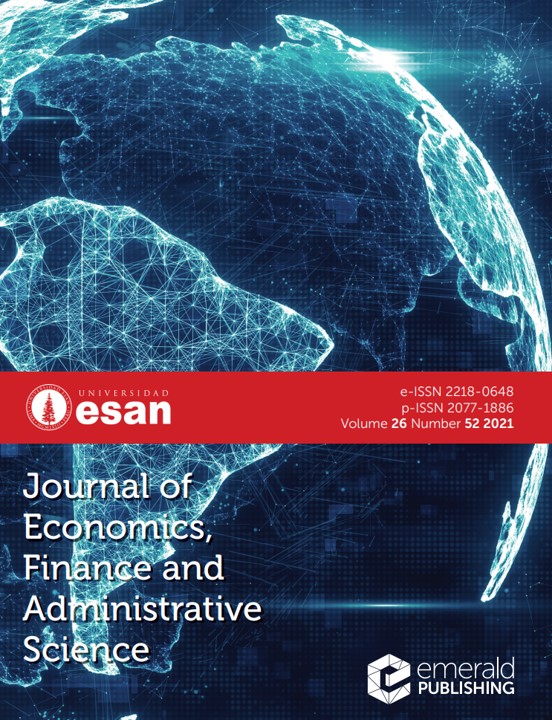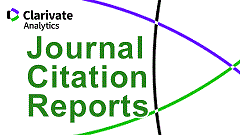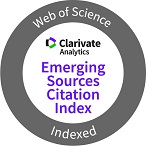The effectiveness of risk management system and firm performance in the European context
Keywords:
Risk management system, Firm performance, European firms, Control mechanismsAbstract
Purpose. The purpose of this paper is to study the effectiveness of the risk management system in the European context, especially with regard to the risk management committee, the uncertainty of the environment and company performance. In summary, it evaluates European companies listed on the stock exchange in France, Germany and the United Kingdom to determine how risk management systems influence financial companies' performance.
Design/methodology/approach. To study the effectiveness of risk management systems and their influence on performance, the large companies selected in our sample are fairly representative of the European market, according to the Dutch indices of each country (SBF 120 in France, HDAX 110 in Germany and FTSE 100 in United Kingdom).The empirical evidence is based on an international quantitative analysis, using a data set involving 320 companies listed on the stock exchange over a ten-year period from 2005 to 2014.
Findings. The results indicate that the establishment of a risk management and control system by a company positively influences its management, and its performance level and value creation also improve. The results of this study demonstrate a significant strengthening of the role of the risk management committee in the three countries. The surveillance function is reinforced, and in particular, the internal control system is accentuated.
Research limitations/implications. This study has some limitations that can form leads for future research. One of these limitations is the sample size. The authors have represented the European context by three countries that certainly constitute great European powers, but have regulations different from other countries. The company size is also a possible research element. Indeed, risk management system varies between large, small and medium-sized enterprises, so it is important to study each type of company well.
Originality/value. This study identifies the risk management committee as a mechanism of control that is highly important in the company, and it proposes an international framework that comparatively and empirically evaluates how the risk management system used in large European companies can improve their financial performance.
Downloads
References
Aebi, V., Sabato, G. and Schmid, M. (2012), “Risk management, corporate governance, and bank performance in the financial crisis”, Journal of Banking and Finance, Vol. 36 No. 12, pp. 3213-3226.
Bich, T.N. and Hutchinson, M. (2013), “Corporate governance and risk management: the role of risk management and compensation committees”, Journal of Contemporary Accounting and Economics, Vol. 9 No. 1, pp. 83-99.
Bruce, A.W., Richard, L.P. and Vinay, K.G. (2007), “Incertitudes environnementales et performance de l'entreprise”, in Bournois, F., Duval-Hamel, J. and Roussillon, S. (Eds), Comités exécutifs: Voyage au coeur de la dirigeance, Editions Eyrolles, p. 862.
Carnevale, C., Mazzuca, M. and Venturini, S. (2012), “Corporate social reporting in European banks: the effects on a firm's market value”, Corporate Social Responsibility and Environmental Management, Vol. 19 No. 3, pp. 159-177.
Donaldson, T. and Preston, E. (1995), “The stakeholder theory of the corporation: concepts, evidence and implications”, Academy of Management Review, Vol. 20 No. 1, pp. 65-91.
Freeman, R.E. (1984), Strategic Management: A Stakeholder Approach, Pitman, Boston.
Gordon, L.A., Loeb, M.P. and Tseng, C.Y. (2009), “Enterprise risk management and firm performance: a contingency perspective”, Journal of Accounting and Public Policy, Vol. 28 No. 4, pp. 301-327.
Gray, R. (2006), “Social, environmental and sustainability reporting and organisational value creation?”, Accounting, Auditing and Accountability Journal, Vol. 19 No. 6, pp. 793-819.
Gulsun, A. and Royer, I. (2009), “Renforcement de la résilience par un apprentissage post-crise: une étude longitudinale sur deux périodes de turbulence”, Management, Vol. 12 No. 4, pp. 266-293.
Haushalter, D. (2000), “Financing policy, basis risk, and corporate hedging: evidence from oil and gas producers”, The Journal of Finance, Vol. 55 No. 1, pp. 107-152.
Hess, D. (2008), “The three pillars of corporate social reporting as new governance regulation: disclosure, dialogue, and development”, Business Ethics Quarterly, Vol. 18 No. 4, pp. 447-482.
Hoyt, R.E. and Liebenberg, A.P. (2011), “The value of enterprise risk management”, Journal of Risk and Insurance, Vol. 78 No. 4, pp. 795-822.
Jensen, M.C. (1983), “Organization theory and methodology”, Accounting Review, Vol. 58 No. 2, pp. 319-339.
Jensen, M.C. (1986), “Agency costs of free cash-flow, corporate finance, and takeovers”, American Economic Review, Vol. 76 No. 2, pp. 323-329.
Jones, T.M. and Wicks, A.C. (1999), “Convergent stakeholder theory”, Academy of Management Review, Vol. 24 No. 2, pp. 206-221.
Korosec, B. and Horvat, R. (2005), “Risk reporting in corporate annual reports”, Economic and Business Review for Central and South-Eastern Europe, Vol. 7 No. 3, p. 217.
Kose, J., Lubomir, L. and Bernard, Y. (2008), “Corporate governance and managerial risk taking”, The Journal of Finance, Vol. 63 No. 4, pp. 1679-1728.
Krolikowski, M.W. (2016), “Incentive pay and acquirer returns-The impact of Sarbanes Oxley”, The Quarterly Review of Economics and Finance, Vol. 59, Issue C, pp. 99-111.
Marsat, S. and Williams, B. (2014), “Does the market value social pillar?”, available at: http://ssrn.com/abstract=2419387.
Mayer, N., Aubert, J., Grandry, E., Feltus, C., Goettelmann, E. and Wieringa, R. (2019), “An integrated conceptual model for information system security risk management supported by enterprise architecture management”, Software and Systems Modeling, Vol. 18 No. 3, pp. 2285-2312.
Mercier, S. (2001), “L'apport de la théorie des parties prenantes au management stratégique: une synthèse de la littérature”, Actes de la Xième conférence de l'Association Internationale de Management Stratégique, Québec, 13–15 June 7, Université Laval.
Mongiardino, A. and Plath, C. (2010), “Risk governance at large banks: have any lessons been learned?”, Journal of Risk Management in Financial Institutions, Vol. 3 No. 2, pp. 116-123.
Nelling, E. and Webb, E. (2009), “Corporate social responsibility and financial performance: the ‘virtuous circle’ revisited”, Review of Quantitative Finance and Accounting, Vol. 32 No. 2, pp. 197-209.
OCDE (2010), “Risk and regulatory policy: improving the governance of risk”, in OECD Reviews of Regulatory Reform, Éditions OCDE, doi: 10.1787/9789264082939-en.
Priem, R.L. and Cycyota, C.S. (2001), “On strategic judgment”, in Hitt, M., Freeman, E. and Harrison, J. (Eds), Handbook of Strategic Management, Blackwell.
Qiu, Y., Shaukat, A. and Tharyan, R. (2016), “Environmental and social disclosures: link with corporate financial performance”, The British Accounting Review, Vol. 48 No. 1, pp. 102-116.
Rogers, D. (2002), “Does executive portfolio structure affect risk management? CEO risk-taking incentives and corporate derivatives usage”, Journal of Banking and Finance, Vol. 26 Nos 2-3, pp. 271-295.
Simpson, W.G. and Kohers, T. (2002), “The link between corporate social and financial performance: evidence from the banking industry”, Journal of Business Ethics, Vol. 35 No. 2, pp. 97-109.
Soltani, B. (2014), “The anatomy of corporate fraud: a comparative analysis of high profile American and European corporate scandals”, Journal of Business Ethics, Vol. 120 No. 2, pp. 251-274.
Soyka, P.A. and Bateman, M.E. (2012), Finding Common Ground on the Metrics that Matter, Investor Responsibility Research Center (IRRC) Institute, available at: http://irrcinstitute.org/wp-content/uploads/2015/09/IRRC-Metrics-that-Matter-Report_Feb-20121.pdf.
Sperling, J. and Webber, M. (2019), “The European Union: security governance and collective securitisation”, West European Politics, Vol. 42 No. 2, pp. 228-260.
Subramaniam, N., McManus, L. and Zhang, J. (2009), “Corporate governance, firm characteristics and risk management committee formation in Australian companies”, Managerial Auditing Journal, Vol. 24 No. 4, pp. 316-339.
Suchman, M.C. (1995), “Managing legitimacy: strategic and institutional approaches”, Academy of Management Review, Vol. 20 No. 3, pp. 571-610.
Triki, T. and Dionne, G. (2004), “On risk management determinants: what really matters?”, HEC Montréal Risk Management Chair Working Paper No. 04–04, available at: http://ssrn.com/abstract=558761.
Yamanaka, T. (2018), “Corporate boards in Europe and Japan: convergence and divergence in transition”, European Business Organization Law Review, Vol. 19 No. 3, pp. 503-525.
Yatim, P. (2010), “Board structures and the establishment of a risk management committee by Malaysian listed firms”, Journal of Management and Governance, Vol. 14 No. 1, pp. 17-36.
Downloads
Published
How to Cite
Issue
Section
License
Copyright (c) 2021 Journal of Economics, Finance and Administrative Science

This work is licensed under a Creative Commons Attribution-NonCommercial-NoDerivatives 4.0 International License.











